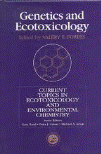Papers in the Biological Sciences

Valery Forbes Publications
Document Type
Article
Date of this Version
1-2003
Citation
Published in Aquatic Toxicology 62:1 (January 10, 2003), pp. 35–44; doi: 10.1016/S0166-445X(02)00065-6
Abstract
Sea-Nine™211 has been introduced as a new biocide in antifouling paints with an immediate degradation when it is released from ship hulls. The active component of Sea-Nine™211 is 4,5-dichloro-2-n-octyl-isothiazoline-3-one (DCOI). In the present study, the toxicity of DCOI and the occurrence of Pollution Induced Community Tolerance (PICT) were tested in microcosms containing eutrophic coastal water with its natural composition of phytoplankton. The experiment was performed in closed systems with a single addition of the nominal concentrations 0, 3.2, 10, 32 and 100 nM DCOI, for a period of 16 days. Pollution induced community tolerance (PICT) was observed in the phytoplankton communities exposed to the nominal concentrations 32 and 100 nM DCOI. Chemical analysis of DCOI in the coastal water utilized in the toxicity and PICT experiment was performed by GC-MS using a solid- phase extraction method. Half-life was calculated to be 2.5 days for the nominal concentrations 32 and 100 nM DCOI. The results of the present study show that nominal concentrations of 32 and 100 nM DCOI significantly increased the community tolerance already after 2 days of exposure and that the tolerance was maintained for a period of 16 days even when DCOI was degraded during this period. The causes for the persistent tolerance are discussed in relation to the degradation of DCOI and structural changes in the phytoplankton communities.


Comments
Copyright © 2003 Elsevier Science B.V. Used by permission.